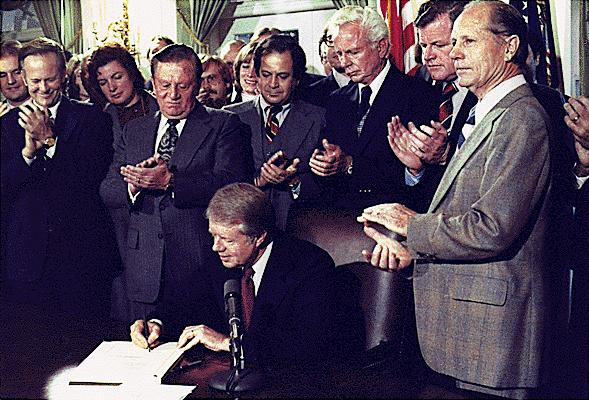The airline industry has always held an allure of sophistication and adventure. It has the power to connect people and cultures, bridging vast distances and making the world feel smaller. But behind the glamour and the soaring airplanes, there lies a complex web of regulations that have shaped the industry’s evolution. One pivotal chapter in this history is the era of deregulation, a transformative period that revolutionized how airlines operate and compete.
Setting the Stage: Pre-Deregulation Landscape
Before we delve into the impact of deregulation, it’s crucial to understand the landscape that preceded it. In the United States, for instance, the airline industry was heavily regulated by the Civil Aeronautics Board (CAB). This regulatory body oversaw virtually every aspect of the industry, from fares and routes to mergers and entry barriers. While this system aimed to ensure stability and prevent cutthroat competition, it also stifled innovation and limited choices for consumers.
Taking Flight: The Deregulation Movement
The winds of change began to blow in the late 1970s. Frustrated by high fares, limited options, and a lack of competition, calls for deregulation gained momentum. Proponents argued that freeing airlines from regulatory shackles would introduce healthy competition, leading to reduced fares, increased efficiency, and broader access to air travel.
Winds of Change: The Airline Deregulation Act of 1978
The turning point came with the passage of the Airline Deregulation Act of 1978 in the United States. This landmark legislation aimed to gradually phase out government control over the airline industry. It eliminated the CAB’s authority to set fares and routes and removed entry restrictions for new airlines. This newfound freedom allowed airlines to make business decisions based on market demand rather than bureaucratic red tape.
Turmoil in the Skies: Early Transition and Benefits
The aftermath of deregulation brought both turbulence and clarity to the industry. Airlines faced challenges as they navigated the transition from a regulated to a deregulated environment. Some legacy carriers struggled to adapt to the increased competition, while others thrived by embracing innovation and customer-centric strategies. One of the most significant benefits was the rapid expansion of routes and destinations, connecting travelers to places that were previously underserved.
The Rise of Low-Cost Carriers: Changing the Game
Perhaps the most visible impact of deregulation was the emergence of low-cost carriers (LCCs). These airlines, often characterized by no-frills service, simplified operations, and lower fares, reshaped the industry’s landscape. Companies like Southwest Airlines and Ryanair revolutionized air travel by making it more accessible to a broader range of passengers. Their success forced legacy carriers to reevaluate their business models and offer competitive fares.
A New Era of Competition and Innovation
As competition intensified, airlines began to explore innovative ways to stand out in the crowded skies. Services that were once considered premium, like in-flight meals and extra legroom, became optional, allowing travelers to customize their experience based on their preferences and budget. Airlines also embraced technological advancements, from online booking systems to electronic ticketing, streamlining processes and enhancing the passenger experience.
Impact on Fares and Accessibility
One of the central promises of deregulation was the reduction of airfares, and this promise largely held true. With increased competition and the rise of low-cost carriers, airfares became more affordable for the average traveler. This accessibility led to an exponential increase in air travel, as more people could afford to fly, contributing to the growth of tourism, business travel, and globalization.
Challenges and Concerns
However, the turbulence of deregulation wasn’t without its downsides. Critics argued that it led to a race to the bottom, with airlines cutting costs at the expense of safety and service quality. Bankruptcies among airlines became more common as competition intensified, and some carriers struggled to maintain profitability. Additionally, concerns about the environment arose as air travel’s carbon footprint grew along with increased flights.
A Global Phenomenon: Deregulation Worldwide
The impact of deregulation wasn’t confined to the United States; it sparked a global movement that reshaped aviation on a worldwide scale. Countries around the world, from Europe to Asia, gradually adopted similar policies, freeing their own airline industries from government controls. This globalization of deregulation further expanded the reach of air travel and increased opportunities for international business and tourism.
Into the Future: Navigating the Skies Ahead
As we look to the future, the legacy of deregulation continues to shape the airline industry. Airlines still grapple with finding the right balance between profitability, innovation, and sustainability. The challenges of managing increased demand while reducing environmental impact remain at the forefront of industry discussions. New technologies, such as electric and hybrid aircraft, hold promise for a more sustainable aviation future.
Clear Skies, Complex Landscape
In conclusion, the impact of deregulation on the airline industry has been nothing short of transformative. It shattered the old paradigms of government control and ushered in an era of competition, accessibility, and innovation. While the journey has been turbulent at times, the skies are undeniably clearer, offering passengers more options and opportunities than ever before. As the industry continues to evolve, one thing is certain: the spirit of deregulation will forever be etched in the aviation industry’s history, reminding us of the power of change and the boundless potential of the skies.
























